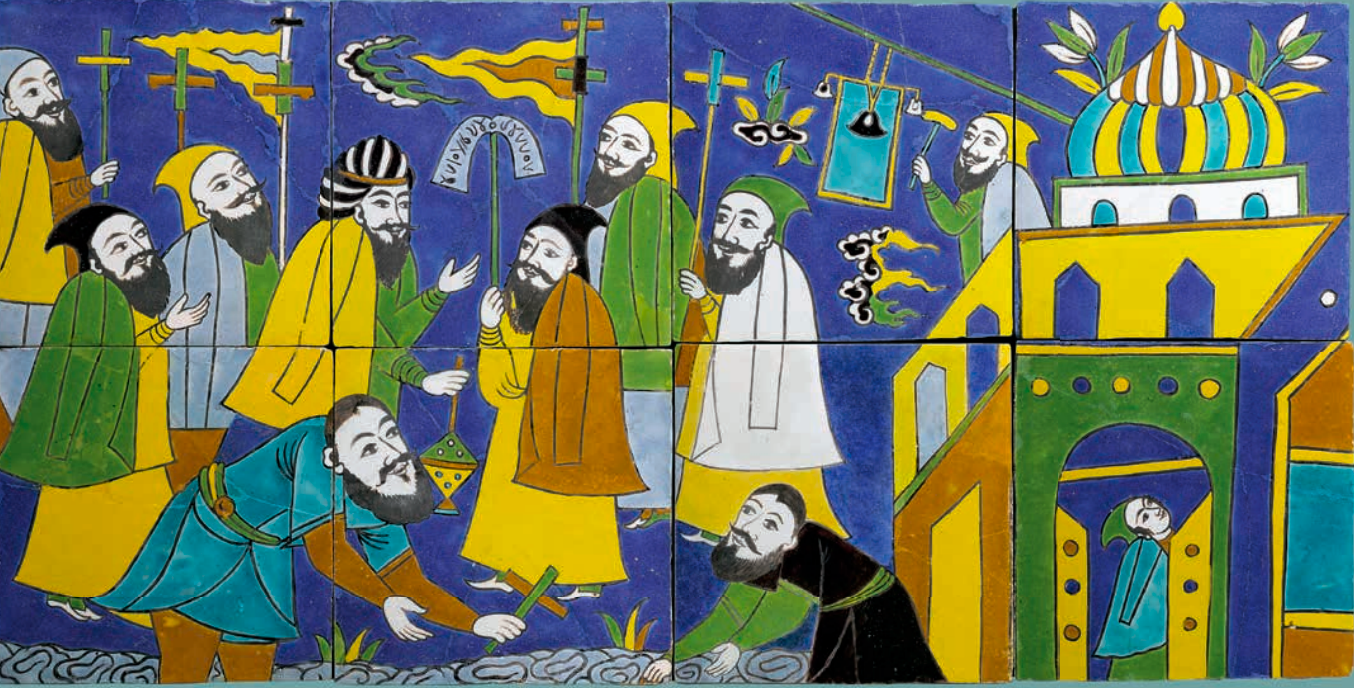
The treasure of the Shanghai Museum's museum - the high-ranking figure in the "Grandson's High Yi Tu" appeared gradually in the Shanghai Concert Hall last night, as if listening to a whisper from ancient times that penetrated time, or traveled back to the past in a trance.
Last night (October 28), the premiere performance of "Folk Music for Life at Sea - Cultural Relics and Folk Music for the 70th Anniversary of the Shanghai Museum", a cross-border collaboration between the Shanghai Museum and the Shanghai Chinese Orchestra, kicked off at the Shanghai Concert Hall. Precious cultural relic elements are displayed on the stage in the form of digital choreography, and the audience can feel the power of the museum in the organic integration of national treasures, national music, light and shadow, and technology.
From "Tang Palace Night Banquet" where "the temples and clouds want to pass the fragrant cheeks and snow, and the fragrance of the clothes and the shadows are the prosperous Tang Dynasty" to "Only Blue and Green - Dancing Paintings of Thousands of Miles of Rivers and Mountains", each frame is an ancient painting. The more music and dance draw inspiration from the treasures of Chinese cultural relics, which not only bring audio-visual enjoyment to the audience, but also allow more people to understand history and get closer to tradition.


At the performance site, the curtain rises slowly
When the melodious sound of the melodious silk and bamboo chords sounded on the stage, the curtain rose slowly, and the treasure of the Shanghai Museum—the high-ranking figure in the "Grandson's High Yi Tu" appeared one by one. The performance started with "Sea Gathering". The host, Cao Kefan, joined hands with five experts from three generations of Shanghai Bo, old, middle and young - Chen Kelun, Lu Minghua, Liu Yiwen, Ling Lizhong and Shi Yuan to sit together to exchange cultural relics and folk music with folk music artists. Fusion, leading the audience into the Chinese Yaji culture.
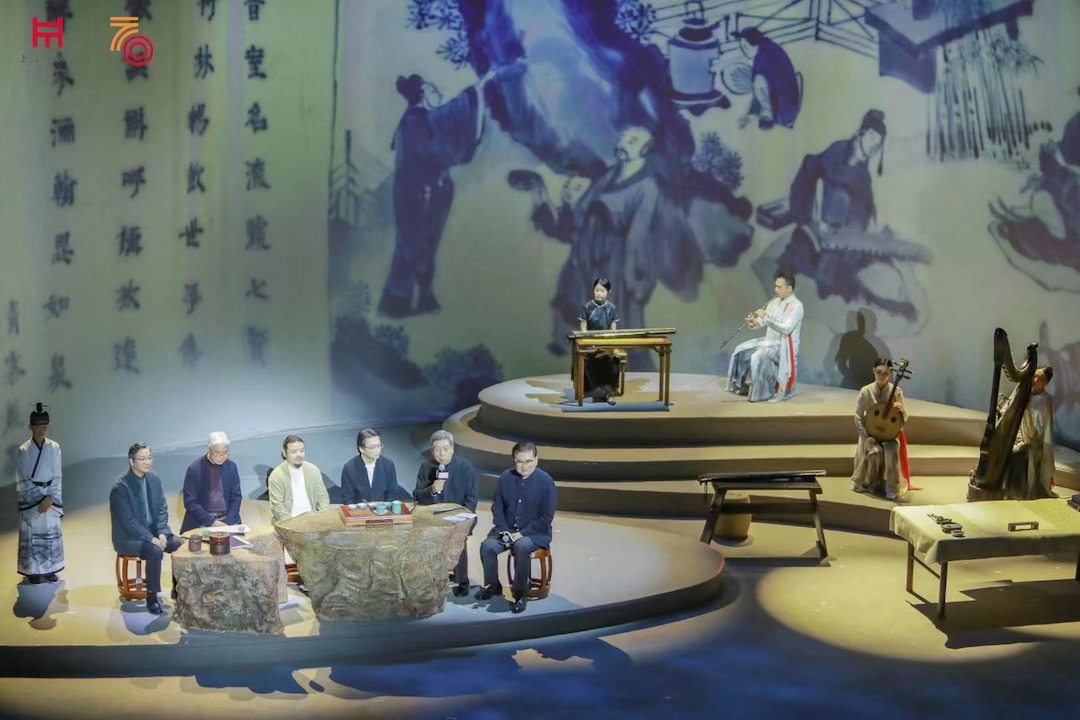
Exhibition site
Throughout the history of literati elegant gatherings, elegant scholars met friends and recited poetry and prose in the mountains and rivers, such as the famous "Lanting Gathering" and "Xiyuan Gathering". Preface to the Collection" and "Paintings of the Elegant Collection of the West Garden" and other precious cultural and artistic works. Experts from Shanghai Expo explained to the audience the pleasures of appreciating the cultural relics in the collection from the historical context of Yaji culture, and had a dialogue with ancient literati that spanned time and space.
The earliest images of the Seven Sages of the Bamboo Forest we saw were roughly on the portrait bricks. In fact, later on different carriers, we can see the performance of similar themes, such as porcelain, calligraphy and painting, and bamboo carvings.
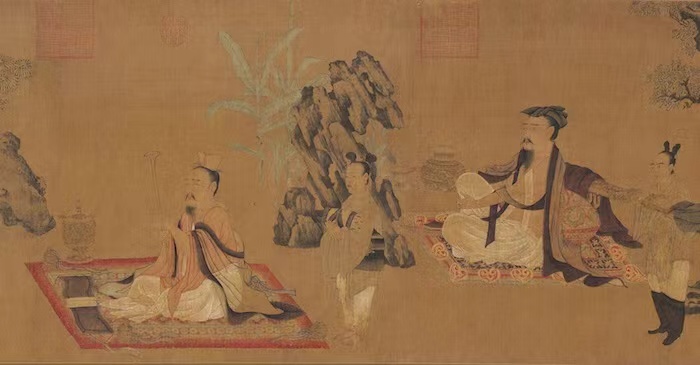
"The High Elegance of the Sun", in the collection of Shanghai Museum
The "Gao Yi Tu" of the grandson mentioned above is also known as "The Seven Sages". The painting name "Gao Yi Tu of the Sun Wei" was inscribed by Zhao Ji, Emperor Huizong of Song Dynasty. s story. Through his skillful and superb technique, the painter has brilliantly portrayed the common characteristics of the Wei and Jin scholar-officials' "elegant demeanor", as well as their personalities. The "Gao Yi Tu" I see now is a fragment of the "Seven Sages in the Bamboo Forest". There are only four sages left in the picture. After research, they are Shan Tao, Wang Rong, Liu Ling and Ruan Ji. The pictures of Ji Kang, Xiang Xiu, and Ruan Xian were missing in the Northern Song Dynasty. In the scroll-like picture, the four sages are sitting on ornate felt blankets, each with a child waiting beside them.
Chen Kelun introduced a penholder of the Qing Dynasty Kangxi Blue and White Bamboo Forest Seven Sages in the Shanghai Museum of Art. Chen Kelun also mentioned that the blue-and-white craftsmanship in the 17th century had already made a breakthrough, and the blue-and-white monochromatic tone had become multi-layered, and the rendering method like this is very close to the traditional Chinese ink painting hand scroll.
Ling Lizhong mentioned that the endless elegant gathering activities such as the Five Old People in Suiyang, Xiyuan Gathering, Yushan Gathering, etc. all happened in real life. The elegant collection of literati is an important place where the ancient cultural elites collided their thoughts and produced culture and art. This theme has also become one of the classic themes in our painting history. The elegant collection of the West Garden refers to the gathering scene of Li Gonglin and many literati, including Su Dongpo, Huang Tingjian, Mi Fu, Cai Xiang, Qin Guan and other celebrities, in the palace of the prince-in-law and commander Wang Xu during the Northern Song Dynasty. This event also left the famous "Xiyuan Elegant Collection", which was drawn into the painting by the famous painter Li Gonglin. Unfortunately, the painting no longer exists, but the painters of all dynasties after him have painted this theme, and it has endured for a long time. Among them, Including "the elegant collection of the West Garden" by Shi Tao, a painter in the early Qing Dynasty.

Shi Tao's "Elegant Collection of the West Garden" in the early Qing Dynasty
Shi Yuan, a research librarian of the Shanghai Museum, introduced a bamboo-carved pen holder. He said that although there was no pen holder in the famous elegant collections of the past dynasties, but on the bamboo-carved pen holder after the Ming Dynasty, literati of the past dynasties continued to appear. The figure of Yaji, this is a very interesting thing. He also performed "Introduction to a Good Night" with Guqin master Ms. Gong Youlan, and Liu Yiwen, a research librarian, wrote "Brave and Diligent" on the spot, wishing the Shanghai Museum to create greater glories.
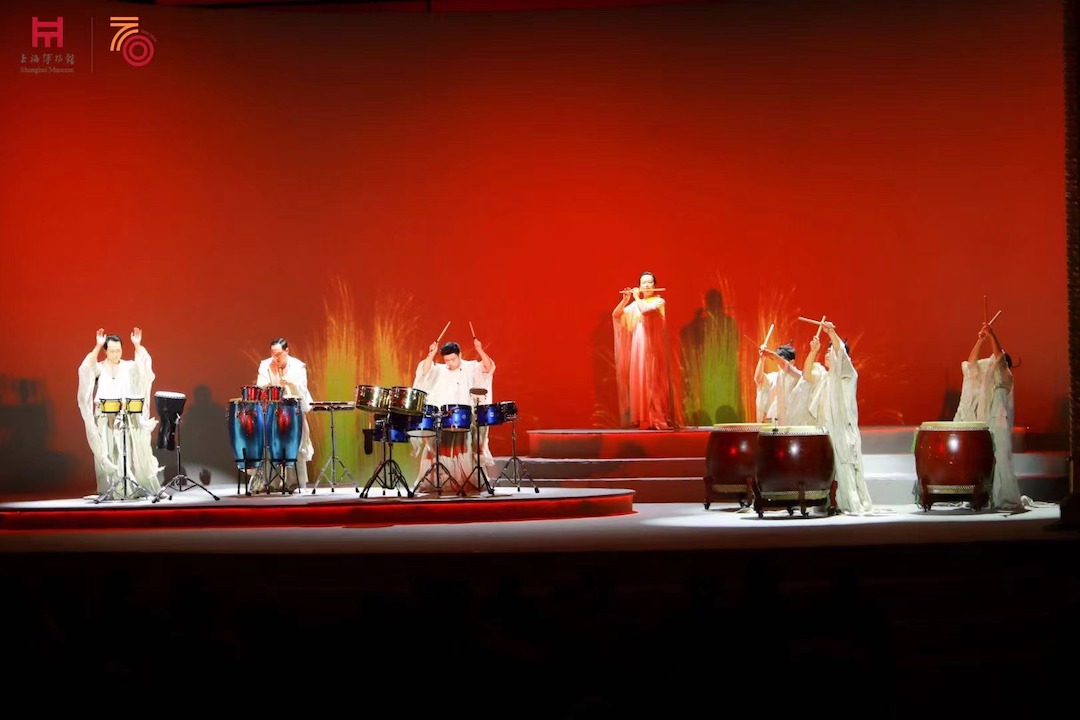
Exhibition site
In the "Folk Music Performance" section, the artists of the Shanghai Chinese Orchestra brought nine original Shanghai-style folk music works with diverse styles to the audience, ranging from ancient and dilute, vigorous and vigorous, or elegant and spacious. China's folk music has a long history. From the Western Zhou Dynasty to the Spring and Autumn Period and the Warring States Period, the folks were popular to play the sheng, the drum, the building, and the piano, the drum music in the Qin and Han Dynasties, and the pipa music in the Sui and Tang Dynasties. , the earliest real musical instrument in China, the Jiahu bone flute from 7800 to 9000 years ago, and the rare guqin collected in the museum, which are already precious cultural relics in themselves.
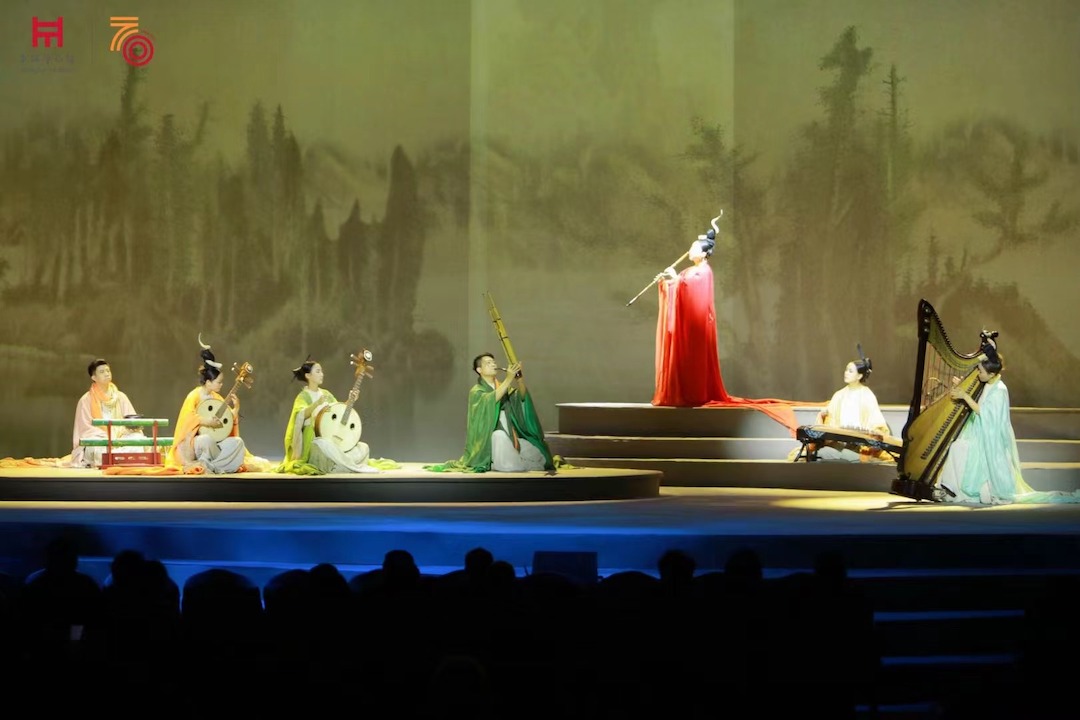
The main screen of "Landscape" is Qian Xuan's "Fuyu Mountain Residence" as the main screen

Qian Xuan "Pictures of Residence in Fuyu Mountain"
"The thousand-year-old bone flute is like the wind to tell the light of wisdom of ancient civilizations"; "Heroes are brave, unrivaled in the world, beautiful and long-songs, and their love is unswerving"; ... "The black and white ink and wash are in the heaven and the earth. "...The performance includes 9 pieces of "Ji Gu", "Wine Song/Yu Xi", "Water Travel", "Crossing", "Fire Dance", "Flying Bee", "Ink Opera/Feng Ya", "Silk Road" and "Shanshui".

Mi Fu's calligraphy works

The main screen of "Ink Opera" uses Mi Fu's calligraphy works as the background
Among them, "Ink Opera", "Shanshui" and "Silk Road" are the three pieces of the original stage art, which are innovated and upgraded by the precious cultural relics collected by the Shanghai Expo Museum combined with digital technology, empowered by national treasures, culturally blessed, and the power of the museum has endowed the traditional stage theater with a brand new space. Audio-visual language. In the splendid light and shadow, the classics of calligraphy and ink opera by Mi Fu in the Song Dynasty and Zhu Yunming in the Ming Dynasty, the landscape artistic conception of "Dwelling in Fuyu Mountain" by Qian Xuan in the Yuan Dynasty, and the exotic customs of the Silk Road cultural relics, jointly build an audio-visual that contains traditional aesthetics and is full of Shanghai style. feast.
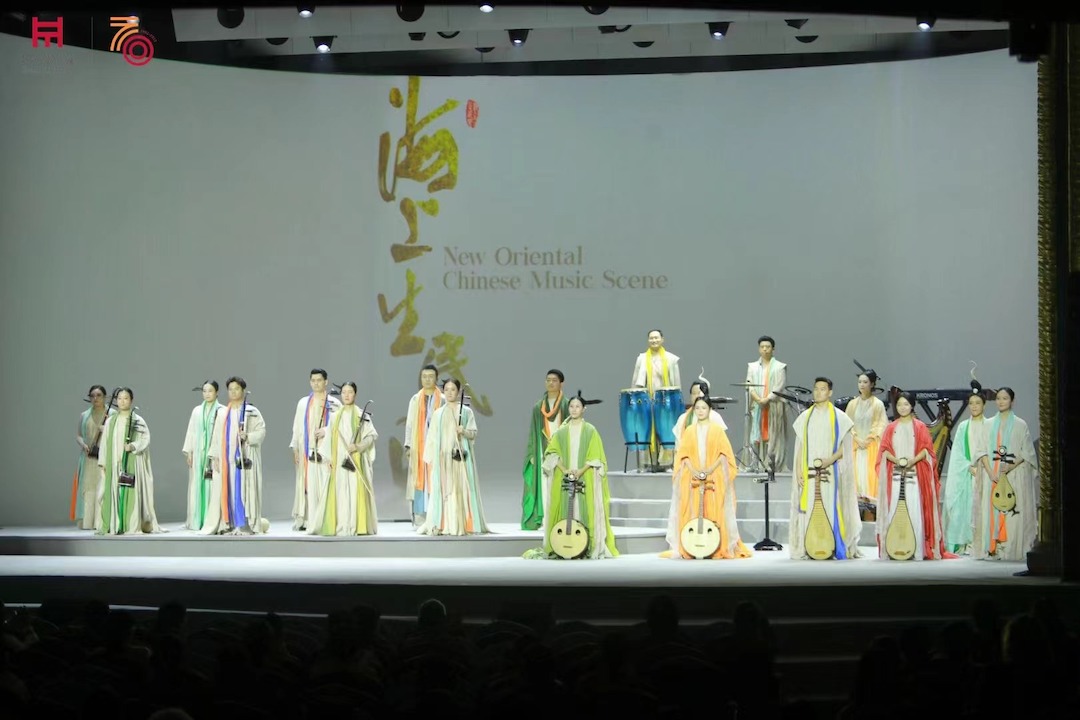
Exhibition site
According to the organizer, this exhibition is a grateful feedback to Shanghai Bo’s donors, volunteers, industry colleagues and people from all walks of life who are enthusiastic about the museum business. The audience can celebrate the 70th anniversary of the establishment of the Shanghai Museum in an audible and sensible artistic atmosphere. The show runs from October 28th to November 1st.
